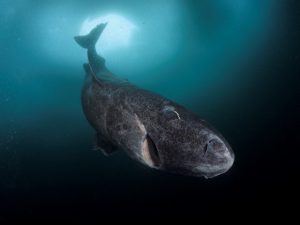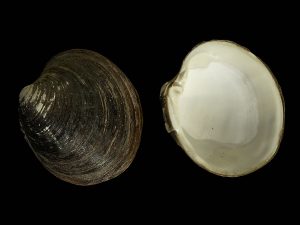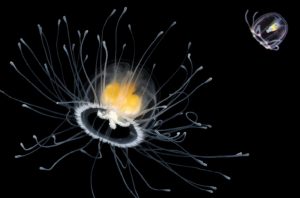Top 5 Longest Living Animals On Earth
The nature of all living beings is different. The life expectancy of people is 71 years, but there are other creatures that can live much longer.
The life expectancy of animals differs for hundreds of years depending on the species. Scientists have dealt with many of them and so come up with a lot of interesting information and facts.
Some beings seem to be immortal! Whether it is a quick regeneration of damaged organs or the transformation of old cells into the young, these animals have in their own way beat death.
We are introducing you to five species that are sure to live for more than 100 years…
Galapagos Giant Tortoise – 150 years
 At the beginning of the 17th century, the pirates used the Galapagos as a base for repairing their ships and replenishing their inventories before fleeing into the Spanish colonies on the South American coasts. The main attractions were the Giant tortoises, which were taken by pirates on their ships and kept there for a several months. They were an inexhaustible source of fresh meat for them.
At the beginning of the 17th century, the pirates used the Galapagos as a base for repairing their ships and replenishing their inventories before fleeing into the Spanish colonies on the South American coasts. The main attractions were the Giant tortoises, which were taken by pirates on their ships and kept there for a several months. They were an inexhaustible source of fresh meat for them.
This animals can live up to 150 years. These turtles in their body have large supply of food and water. Thanks to this, they can withstand up to a year without food and water.
Since the 18th century, many of these turtles have been collecting for the oil that they produced. Early visitors were hunted them which led to a drastic reduction of population. No one can say with certainty how many turtles are caught during this period, but there is a story about 100,000. Today there are about 15,000 species of this amazing animal.
Bowhead Whale – 200 years
 The bowhead whales can experience more than 200 years. So far the oldest known died at 211 years of age. By studying the genetic model of this animal, experts have noted genes that successfully fight cancer and are able to successfully repair damaged DNA.
The bowhead whales can experience more than 200 years. So far the oldest known died at 211 years of age. By studying the genetic model of this animal, experts have noted genes that successfully fight cancer and are able to successfully repair damaged DNA.
The Bowhead whale 15 meters long, caught in 2007 in front of the Alaska Coast, in its body had a piece of harp from the 19th century. The top of the harp that overgrown between the whalebone and the shoulder blade was probably produced in New Bedford, on the southeastern coast of Massachusetts, the main whaling center at that time.
The number of bowhead whales in 2018 was estimated at about 12,000 with annual population growth of about three percent. For Eskimos from Alaska, this fish is an important source of food and part of the tradition, and is under the supervision of the International Commission for Whaling.
Greenland Shark – 300 years
 Greenland sharks are also known as a sleeping sharks due to its lethargic appearance and shaky movement. They live north of any other known species of sharks. The Greenland shark lives in cold waters of the North Atlantic and the Arctic although it is seen in waters near France and Portugal and in St. Lawrence gulf.
Greenland sharks are also known as a sleeping sharks due to its lethargic appearance and shaky movement. They live north of any other known species of sharks. The Greenland shark lives in cold waters of the North Atlantic and the Arctic although it is seen in waters near France and Portugal and in St. Lawrence gulf.
The largest recorded size of Greenland shark is 6.4m; caught in the Isle of May in Scotland in January 1895 and weighed 1020kg. The length of 7.3 meters is also quoted elsewhere, though some scientists keep this as asextravagantly. The growth of Grenland sharks has slowed down due to the low ambient temperature in which they lives.
Although poisonous, meat of this fish can be consumed after it is dried for several months. This meat is known under the name hacarl and is part of the traditional cuisine of Iceland and Greenland. The Greenland shark is popular among fishermen, but has no epithet of “fighter”.
Some scientists believe that a Greenland sharks can reach the age of up to 300 years. In 1988, the unmanned submarine noticed a 6 meters female at a depth of 2200 m which is 1000 m deeper than the largest considered depth in which this species appears.
Artica Islandica Clam – 500 years
 The ocean quahog (Arctica islandica) is a species of edible clam that can live for over 500 years.
The ocean quahog (Arctica islandica) is a species of edible clam that can live for over 500 years.
In 2006, scientists were found this clam at the bottom of the northern Atlantic near Iceland. It was taken to a laboratory at Bangor University where it was found to be at least 500 years old.
The age of this animal is determined by counting the lines on its shell, similar to how the age of a tree is determined by counting the rings. It is possible to count the outer visible lines or those in the interior of the shell, which are visible at the point where two side of the shell are merged.
Scientists have come up with the nickname “Ming” because this calm was born during the reign of this famous Chinese dynasty, and its childhood dates back to the time of Queen Elizabeth I. Or discovery of America.
Immortal Jellyfish – Unlimited
 Since there is a written history, we know people are fascinated by the idea of immortality, the elixir of life. But whenever this topic is mentioned, the question arises: who would ultimately want to live eternally?
Since there is a written history, we know people are fascinated by the idea of immortality, the elixir of life. But whenever this topic is mentioned, the question arises: who would ultimately want to live eternally?
One species of animal obviously has no problem with this issue – Turritopsis dohrnii or know as the immortal jellyfish!
It is discovered in the Mediterranean Sea in 1883 but their unique ability was not known until the mid-1990s. Like most jellyfish, Turritopsis dohrnii passes through two different phases in its life cycle: polyploid or immature stage and juniper or mature phase. While the average lifespan of a jellyfish usually lasts somewhere between several hours for the smallest species, up to several months and rarely several years for larger species, Turritopsis dohrnii, only 4-5 mm long, managed to deceive death by eternal regeneration.
These immortal jellyfish can be transformed between these two stages of life (pulp and jellies), that is, they can break the aging process, reverse it, and return to youth to avoid natural death. This process is called transdiference, and refers to the ability of one cell type to turn into another type.

Comments are closed.